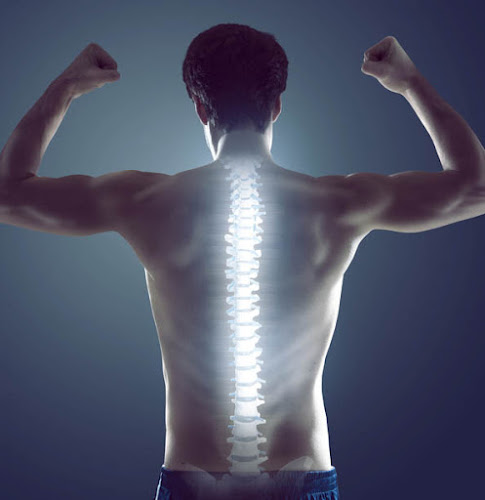Chiropractic Solutions for TMJ: Finding Freedom from Jaw Discomfort
Temporomandibular joint disorder, commonly known as TMJ, is a condition that affects the jaw joint and the muscles that control jaw movement. The exact cause of TMJ is often difficult to pinpoint, as it can be the result of a combination of factors such as genetics, arthritis, jaw injury, or even excessive teeth grinding. The symptoms of TMJ can vary from person to person, but often include pain or tenderness in the jaw, difficulty chewing, clicking or popping sounds when opening or closing the mouth, and even locking of the jaw joint. These symptoms can be not only physically uncomfortable, but also emotionally distressing, as they can impact a person’s ability to eat, speak, and even sleep comfortably.
TMJ can be a debilitating condition that affects many aspects of a person’s life. It can lead to chronic pain, headaches, and even neck and shoulder discomfort. The impact of TMJ on a person’s quality of life can be significant, which is why finding effective treatment options is crucial. Chiropractic care has emerged as a promising solution for those suffering from TMJ, offering a non-invasive and holistic approach to addressing the root causes of the condition.
Key Takeaways
- Chiropractic care can provide relief from TMJ discomfort and improve jaw function
- TMJ can be caused by factors such as teeth grinding, stress, and misalignment of the jaw
- Chiropractic techniques such as adjustments and soft tissue therapy can help alleviate TMJ symptoms
- Lifestyle changes like stress management and proper posture can support chiropractic treatment for TMJ
- Chiropractic solutions for TMJ offer drug-free, non-invasive, and long-term benefits for managing jaw discomfort
The Role of Chiropractic Care in TMJ Treatment
Chiropractic care focuses on the relationship between the body’s structure, particularly the spine, and its function. Chiropractors are trained to identify misalignments in the spine and other joints, and to correct these misalignments through manual adjustments. When it comes to TMJ, chiropractors can assess the alignment of the jaw joint and the surrounding muscles, and make adjustments to improve their function. By addressing any misalignments or imbalances in the jaw joint, chiropractic care can help alleviate the symptoms of TMJ and restore proper function to the jaw.
Chiropractic care for TMJ also takes into account the interconnectedness of the body, recognizing that issues in one area can impact other areas as well. For example, misalignments in the spine or neck can contribute to TMJ discomfort, as they can affect the muscles and nerves that control jaw movement. By addressing these underlying issues through chiropractic adjustments, patients can experience relief from TMJ symptoms and improve their overall well-being. Chiropractic care offers a natural and holistic approach to TMJ treatment, focusing on restoring proper alignment and function to the body without the need for invasive procedures or medications.
Common Chiropractic Techniques for TMJ Relief
Chiropractors use a variety of techniques to address TMJ discomfort and restore proper function to the jaw joint. One common technique is spinal manipulation, which involves applying controlled force to the spine to correct misalignments and improve overall function. By addressing any misalignments in the spine that may be contributing to TMJ symptoms, chiropractors can help alleviate discomfort and restore proper jaw function.
In addition to spinal manipulation, chiropractors may also use soft tissue therapy to address TMJ discomfort. This may involve massage therapy or other manual techniques to release tension in the muscles surrounding the jaw joint. By addressing muscle tension and promoting relaxation in the jaw area, chiropractors can help reduce pain and improve jaw mobility for those suffering from TMJ.
Another common chiropractic technique for TMJ relief is trigger point therapy. This involves applying pressure to specific points in the muscles to release tension and alleviate discomfort. By targeting trigger points in the jaw muscles, chiropractors can help reduce pain and improve overall jaw function for those with TMJ.
Lifestyle Changes to Support Chiropractic TMJ Treatment
| Study | Findings |
|---|---|
| Effectiveness of chiropractic care for TMJ | Improvement in jaw function and reduction in pain |
| Chiropractic adjustments for TMJ | Reduction in muscle tension and improved range of motion |
| Chiropractic treatment for TMJ-related headaches | Reduction in headache frequency and intensity |
In addition to chiropractic care, making lifestyle changes can also support TMJ treatment and promote long-term relief. For example, practicing good posture can help reduce strain on the neck and jaw muscles, which can contribute to TMJ discomfort. Using ergonomic chairs and workstations, taking frequent breaks to stretch and move, and avoiding activities that strain the jaw can all help support chiropractic treatment for TMJ.
Incorporating stress-reducing activities into daily life can also support TMJ treatment. Stress can exacerbate muscle tension in the jaw area, leading to increased discomfort for those with TMJ. Engaging in activities such as yoga, meditation, or deep breathing exercises can help reduce stress and promote relaxation in the jaw muscles.
Dietary changes can also support chiropractic treatment for TMJ. Avoiding hard or chewy foods that can strain the jaw, and incorporating anti-inflammatory foods such as fruits, vegetables, and omega-3 fatty acids can help reduce inflammation and promote healing in the jaw area.
The Benefits of Chiropractic Solutions for TMJ

Chiropractic care offers a number of benefits for those suffering from TMJ. One of the primary benefits is that it provides a non-invasive and drug-free approach to addressing TMJ discomfort. Many traditional treatment options for TMJ involve medications or invasive procedures, which can come with their own set of risks and side effects. Chiropractic care offers a natural alternative that focuses on restoring proper alignment and function to the body without the need for medications or surgery.
Chiropractic care also takes a holistic approach to addressing TMJ, recognizing that issues in one area of the body can impact other areas as well. By addressing underlying misalignments or imbalances in the spine and other joints, chiropractors can help alleviate TMJ symptoms and improve overall well-being for those suffering from this condition.
Another benefit of chiropractic care for TMJ is that it focuses on long-term solutions rather than just symptom management. By addressing the root causes of TMJ discomfort through spinal adjustments, soft tissue therapy, and lifestyle changes, chiropractors can help patients experience lasting relief from their symptoms and improve their overall quality of life.
Finding the Right Chiropractor for TMJ Treatment
When seeking chiropractic care for TMJ, it’s important to find a qualified and experienced chiropractor who specializes in treating this condition. Look for a chiropractor who has experience working with patients with TMJ and who has a thorough understanding of the complexities of this condition. It’s also important to find a chiropractor who takes a holistic approach to treatment, addressing not only the symptoms of TMJ but also the underlying causes.
When meeting with potential chiropractors, ask about their experience treating TMJ and inquire about their treatment approach. A good chiropractor will take the time to listen to your concerns, conduct a thorough assessment of your condition, and develop a personalized treatment plan tailored to your specific needs.
It’s also important to feel comfortable with your chiropractor and trust their expertise. Building a strong rapport with your chiropractor can help ensure that you receive the best possible care for your TMJ.
Managing TMJ Discomfort: Long-Term Chiropractic Solutions
While chiropractic care can provide relief from TMJ discomfort in the short term, it’s important to also focus on long-term solutions to manage this condition effectively. This may involve regular chiropractic adjustments to maintain proper alignment in the spine and jaw joint, as well as incorporating lifestyle changes to support ongoing TMJ treatment.
Regular chiropractic care can help prevent future flare-ups of TMJ by addressing any misalignments or imbalances that may contribute to discomfort. By maintaining proper alignment in the spine and jaw joint, patients can experience lasting relief from their symptoms and improve their overall quality of life.
In addition to regular chiropractic adjustments, incorporating stress-reducing activities into daily life can also support long-term management of TMJ. Engaging in activities such as yoga, meditation, or deep breathing exercises can help reduce stress and promote relaxation in the jaw muscles, reducing the likelihood of future flare-ups.
Making dietary changes can also support long-term management of TMJ. Avoiding hard or chewy foods that strain the jaw, and incorporating anti-inflammatory foods into your diet can help reduce inflammation in the jaw area and promote healing.
In conclusion, chiropractic care offers a non-invasive and holistic approach to addressing TMJ discomfort, focusing on restoring proper alignment and function to the body without the need for medications or surgery. By addressing underlying misalignments or imbalances in the spine and other joints, chiropractors can help alleviate TMJ symptoms and improve overall well-being for those suffering from this condition. With regular chiropractic care and lifestyle changes to support ongoing treatment, patients can experience lasting relief from their symptoms and improve their overall quality of life. If you are suffering from TMJ discomfort, consider seeking out a qualified chiropractor who specializes in treating this condition to explore natural solutions for your pain.
FAQs
What is TMJ?
TMJ stands for temporomandibular joint, which is the joint that connects your jaw to your skull. It allows you to move your jaw up and down and side to side, enabling you to talk, chew, and yawn.
What are the symptoms of TMJ disorder?
Symptoms of TMJ disorder can include jaw pain, clicking or popping sounds when you open or close your mouth, difficulty chewing, facial pain, and locking of the jaw.
How can chiropractic care help with TMJ disorder?
Chiropractic care for TMJ disorder involves gentle adjustments to the jaw, neck, and spine to alleviate tension and improve alignment. This can help reduce pain and improve jaw function.
Are there other treatments for TMJ disorder?
In addition to chiropractic care, other treatments for TMJ disorder may include physical therapy, massage therapy, dental treatments, and lifestyle changes such as stress management and jaw exercises.
Is chiropractic care safe for TMJ disorder?
When performed by a qualified and experienced chiropractor, chiropractic care for TMJ disorder is generally considered safe. It is important to consult with a healthcare professional to determine the most appropriate treatment for your specific condition.

